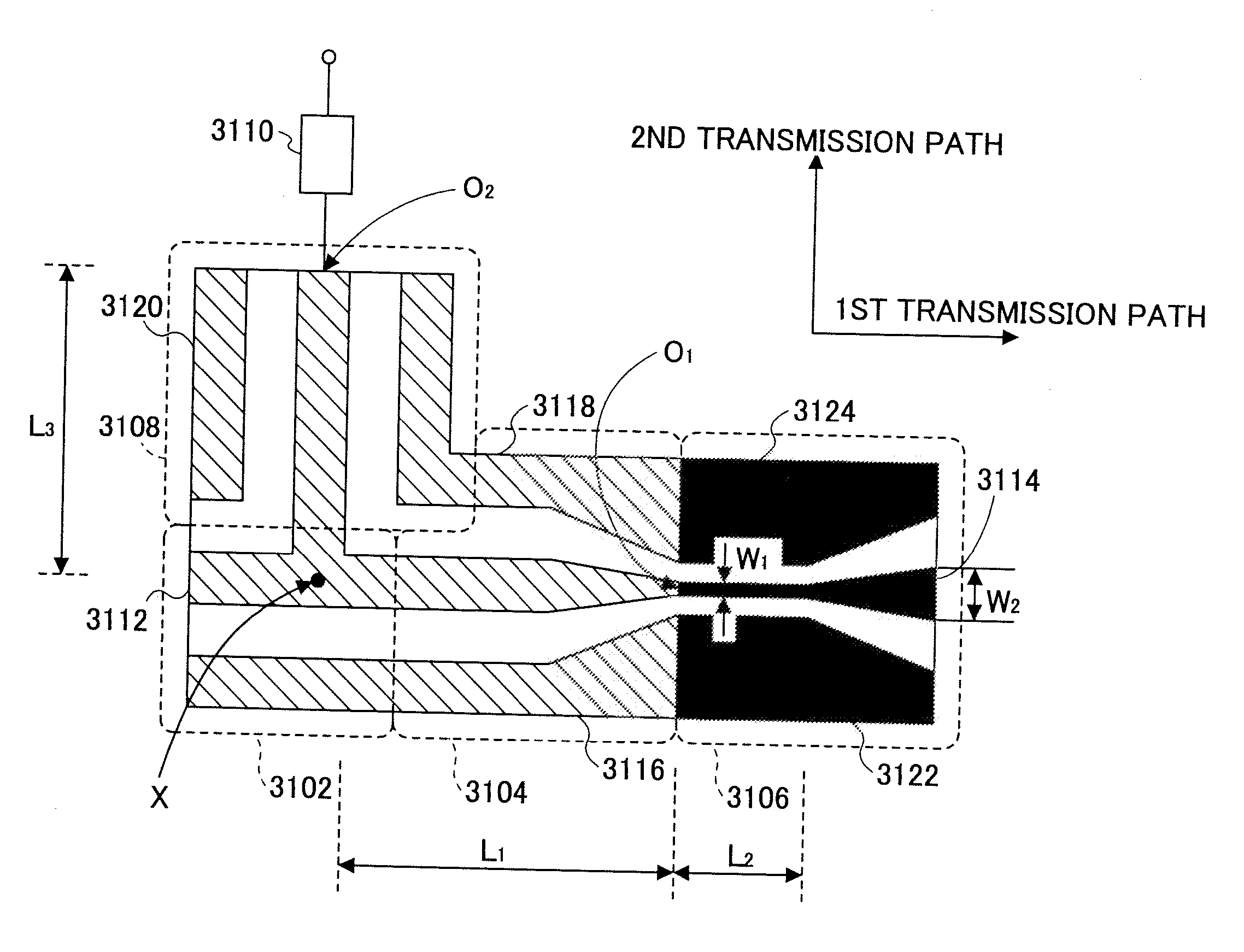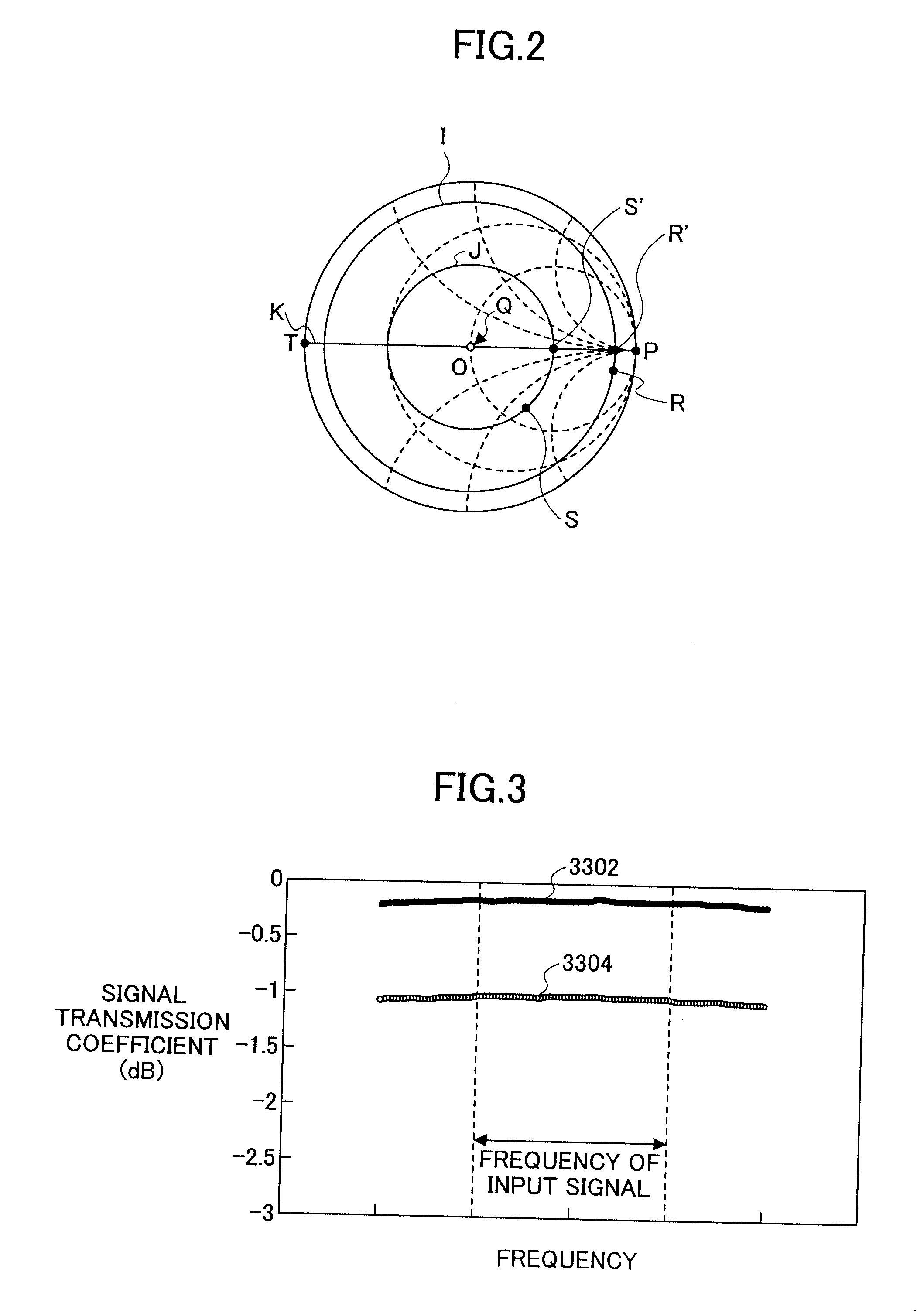Signal switching device
a signal switching and signal technology, applied in the field of high frequency circuits, can solve the problems of reducing the reliability of mechanical switches, and reducing the loss of signals levels, etc., and achieves the effects of low signal loss, good isolation characteristic, and large impedance of the first transmission path
- Summary
- Abstract
- Description
- Claims
- Application Information
AI Technical Summary
Benefits of technology
Problems solved by technology
Method used
Image
Examples
first embodiment
First Example
[0059]FIG. 1A is a plan view of a signal switching device 3100 as an example of a first embodiment of the present invention, and FIG. 1B is a cross-sectional side view of the signal switching device 3100 illustrated in FIG. 1A.
[0060] The signal switching device 3100 includes a switching section 3102 that switches high frequency input signals to a first transmission path or a second transmission path as described below, a first transmission section 3104 that is connected with the switching section 3102 and forms the first transmission path, a serial transmission section 3106 that is connected with the first transmission section 3104, a second transmission section 3108 that is connected with the switching section 3102 and forms the second transmission path, and a switch 3110 that is connected with the second transmission section 3108. These transmission sections are formed by a coplanar wave guide. Strip conductors 3112 and 3114 are provided at centers of the first tran...
second example
[0078]FIG. 4A is a plan view of a signal switching device 3400 as a second example of the first embodiment of the present invention, and FIG. 4B is a cross-sectional side view of the signal switching device 3400 shown in FIG. 4A.
[0079] Similar to the signal switching device 3100 described above, the signal switching device 3400 includes a switching section 3402 that switches high frequency input signals to a first transmission path or a second transmission path, a first transmission section 3404 that is connected with the switching section 3402 and forms the first transmission path, a serial transmission section 3406 that is connected with the first transmission section 3404, a second transmission section 3408 that is connected with the switching section 3402 and forms the second transmission path, and a switch 3410 that is connected with the second transmission section 3408. These transmission sections are formed by a coplanar wave guide. Strip conductors 3412 and 3414 are provide...
third example
[0092]FIG. 6A is a plan view of a signal switching device 3500 as a third example of the first embodiment of the present invention, and FIG. 6B is a cross-sectional side view of the signal switching device 3500 shown in FIG. 6A.
[0093] The signal switching device 3500 includes a switching section 3502 that switches high frequency input signals to a first transmission path or a second transmission path, a first transmission section 3504 that is connected with the switching section 3502 and forms the first transmission path, a serial transmission section 3506 that is connected with the first transmission section 3504, a second transmission section 3508 that is connected with the switching section 3502 and forms the second transmission path, and a switch 3510 that is connected with the second transmission section 3508. These transmission sections are formed by a micro-strip line. The serial transmission section 3506 is made from a superconducting material; the switching section 3502, t...
PUM
 Login to View More
Login to View More Abstract
Description
Claims
Application Information
 Login to View More
Login to View More - R&D
- Intellectual Property
- Life Sciences
- Materials
- Tech Scout
- Unparalleled Data Quality
- Higher Quality Content
- 60% Fewer Hallucinations
Browse by: Latest US Patents, China's latest patents, Technical Efficacy Thesaurus, Application Domain, Technology Topic, Popular Technical Reports.
© 2025 PatSnap. All rights reserved.Legal|Privacy policy|Modern Slavery Act Transparency Statement|Sitemap|About US| Contact US: help@patsnap.com



